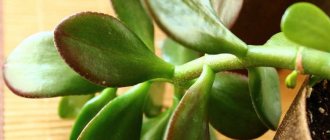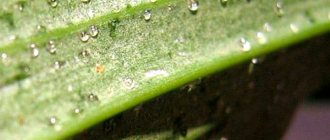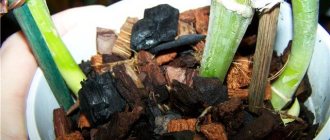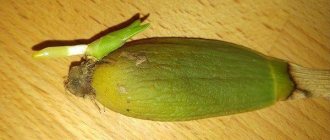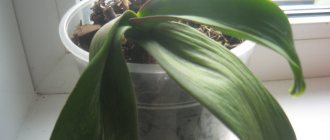Among the large assortment of indoor plants, it is necessary to highlight the azalea. The flower has an unusual appearance and unique care. During the flowering period, the bushes are covered with large buds of various colors. However, very often gardeners are faced with such a problem as falling leaves. In order to find out why an azalea is dropping its leaves, you need to carefully study the possible causes.
Azalea is a popular houseplant
Why do purchased indoor flowers die?
Today it has become fashionable to give flowering plants in pots instead of bouquets of cut flowers.
Azaleas, thanks to their luxurious abundant flowering, are most often purchased as a bouquet substitute. After all, in flower shops this small bush looks so attractive! Unfortunately, those who received an azalea as a gift are not always experts in home floriculture. Therefore, in a plant that does not receive proper attention, the buds dry out without ever blooming, the leaves of the azalea turn yellow and fall off, and sometimes even resuscitation cannot save it.
Often the problem may not only be that the new owners do not know how to create the right conditions for the plant. Sometimes the problem is that in the store, before sale, the plant was abundantly “fed” with bioactive compounds that stimulate flowering. At the same time, the plant did not receive the other conditions it needed.
In order for your luxurious azaleas to live long and delight the eye and soul with their lush blooms, you need to know the features of caring for this capricious one at home.
Harmful insects
Azalea care at home, replanting after purchase
The invasion of harmful insects also leads to the shedding of leaves:
- The larvae of the whitefly butterfly literally suck the liquid from the leaves.
- Aphids also feed on leaf sap. Due to the appearance of a pest, the plant may bloom much earlier than expected.
- Young azaleas may stop flowering due to the appearance of mealybugs. The pest throws out cobwebs and greatly harms the flower.
Rhododendron care
If the plant began to shed its leaves, but you managed to save it, the question naturally arises - what to do next, how to care for the rhododendron at home in order to protect your green friend from a repetition of such a disaster. Here are the most important rules.
- Organize proper watering:
- For watering, use only soft, settled, cool water. Boiled, distilled or drinking water is suitable. You can place small ice cubes on the ground in a pot with a plant. They will gradually melt, cool the plant and maintain soil moisture.
Monitor the moisture content of the substrate in which the azalea grows. It should not be over-moistened, but drying out is also unacceptable. It is better to water through a tray lined with pebbles, expanded clay or sphagnum moss. This will allow you to maintain an ideal microclimate around the flower. The second watering option is to completely immerse the flower pot in a container of water until air bubbles stop coming out of the substrate.
- The water needs to be slightly acidified by adding five to ten drops of apple cider vinegar or lemon juice per liter. Watering with this solution is required once a month.
- It is good to put agricultural hydrogel at the bottom of the pot in the area of the roots. It will not allow the azalea to be flooded, absorbing excess moisture, and will not allow it to die if you forget about watering.
- Only acidic soil will do, so use either ready-made professional mixtures for azaleas, or make it yourself by mixing 1:1 acidic high-moor peat and rotted pine litter.
- Do not plant by deepening the root collar.
- Azaleas can only be replanted after the flowering period has ended.
Provide the necessary lighting: the plant loves bright light, but does not tolerate direct sunlight at all. It is preferable to place it on the east window. On southern windows, the flower pot must be shaded or placed on a stand deep into the room.
Create the desired microclimate: azaleas require high humidity, so they need daily spraying of soft water on the leaves. Adjust the spray bottle so that the water droplets resemble fog. Large drops of water can harm foliage and leave unsightly spots. Do not spray flowers and buds.
Grow azaleas in a cool room: comfortable air temperature is up to 15–18 degrees Celsius.
Watering should be plentiful
The plant should be watered abundantly, but at the same time the soil should not be over-moistened. In autumn, when the process of bud formation is underway, watering should be significantly reduced.
But in the summer, we can recommend special water procedures for azaleas. Once a month you need to place the flower pot in a bucket of water for 3-4 hours. Then you need to let the plant sit so that the excess liquid leaves, and return the pot to its original place on the windowsill.
It is best to take rain water, melt water (from melted snow) or distilled water for irrigation. Tap water can only be used after it has settled well (ideally at least three days); it will be even better if it is boiled. We must not forget that the plant does not like hard water, but prefers, on the contrary, soft water. You can soften water not only by settling or boiling, but also by adding peat or various chemicals that are sold in stores.
Watering conditions must be strictly observed, otherwise you may see the azalea shed its leaves. What to do?
How to care for a plant in a pot when it has bloomed?
In order for the plant to safely spend the dormant period and emerge from it stronger and rested, it is important to properly care for it. The following explains what to do with a faded flower and how to preserve it.
Do I need to trim?
Pruning of faded azaleas is necessary. Procedure:
- First - all the branches on which the flowers have faded, up to a height of 3-4 leaves. You don’t need to trim, but pick off the dried inflorescences.
- Next - all the weak and thin branches to thin out the thickened crown (at the same time you can form the azalea crown of the desired shape).
Some time after the leaves fall, young shoots begin to grow. They must be pinched to prevent them from bushing.
The plant is pruned only with sterile pruning shears; the cut site is also treated with RanNet disinfectant paste, which will help the cut heal faster and provide protection from infection.
Temperature
Providing the required temperature depends on the time of year:
- In the summer, immediately after flowering, azaleas are kept in a shady place in the garden at a temperature no higher than +20 °C.
- In autumn (from October to December) the lowest temperature is needed (+7–11 °C) - this can be achieved by placing the plant on an insulated loggia.
- At the beginning of winter, it is best to keep azalea at a temperature no higher than +10 °C. In urban conditions, this temperature can be achieved on an insulated loggia, and if there is none, then near the balcony door.
Humidity
The humidity in the room where the azalea overwinters should be at least 70%. Since apartments are usually much drier in winter, you can place an air humidifier next to the flower, and also spray it with a spray bottle every two to three days.
You should not place a pot of azalea near a hot radiator.
Lighting
Wintering azaleas need a minimal amount of light. Since the required temperature can usually be provided close to the windows, to create partial shade you will have to cover these windows with some materials that poorly transmit light - sheets of thick paper, newspapers, etc.
Watering
It is necessary to water the azalea rarely during the dormant period. It is better to take settled water, ideally melt water (in winter this is not a problem). It should be cold, but not icy (15–16 °C). Since azalea loves high acidity, citric acid is added to the water (several crystals per 1 liter).
The frequency of watering depends on the room temperature: as soon as the surface of the soil in the pot is dry, it is necessary to water the flower.
Top dressing
Despite the fact that after flowering there is a period of rest, azaleas need fertilizer. They will give the flower the opportunity to enter a new flowering stronger and healthier.
Always fertilize the azalea after watering so that the earthen ball is moist.
Popular articles Description and application of folded thuja Kornik
After flowering, the azalea is fed with special liquid fertilizers:
- Garden of Miracles (dilute 8–10 ml of solution in a liter of water, water at the root once a month).
- Azalea (dilute 8-10 ml in 1 liter of water, water at the root once every 3-4 weeks).
The main principle of fertilizing azaleas during the dormant period is a high nitrogen content. It promotes good recovery of plants after flowering and their active growing season in the future.
Cuttings are not easy
Only young shoots that are not yet woody are suitable for cuttings. Using a sharp knife (blade), a cutting 10-15 cm in size is cut under the bud. It is placed in a container with wet peat and buried approximately 5 cm, the soil around it must be compacted. Then the cutting is covered with a jar or polyethylene. You can also place it in a greenhouse. For rooting to occur faster, high humidity and a temperature of +25 degrees are required.
The cuttings will not rot if they are ventilated and sprayed at least three times a day.
Feeding to help the plant
In order for an azalea to develop well and delight others with its blooms, it must be fed.
From February to August, fertilizer should be applied once a week. This can be ammonium nitrate, ammonium sulfate, superphosphate or potassium sulfate. In winter and autumn, superphosphate will not hurt; it promotes good budding. To maintain the required soil acidity, plants can be watered occasionally, for example, once every two weeks, with a solution of citric acid. To do this, dilute 1 teaspoon of acid in two liters of water. Another way to acidify the soil is to water the flower with a solution (0.2%) of sulfuric acid after 3-4 months. Each time this should be done only after the soil has been moistened.
Read also: How to grow aquilegia from seeds? When to plant, stratification, planting
There are special fertilizers used to feed beautifully flowering plants. This is, for example, “Kemira” or “Ferovit”. They are used as a means to prevent various diseases.
How to resuscitate?
How to resuscitate and revive an azalea, what to do if it has dried up or how to save a dried up azalea?
You need to prepare:
- soil;
- sand;
- ice;
- cold water;
- Activated carbon;
- ash;
- boric acid (citric);
- pine needles;
- drug "Zircon".
The azalea is removed from the pot and the roots are dipped in cold water and washed carefully. Having cleared the substrate, place the plant under a stream of cool running water, plant it in prepared soil (intended for flowers) and leave overnight.
In the morning, cover the soil with ice and water with cold water.
It is necessary to protect the azalea from direct rays of the sun.
Prepare settled water (2 days) by placing a few drops of acid (citric or boric) and the Zircon preparation into it.
Water the azalea with this solution until the result is achieved. The pot with the azalea should be placed on a tray with wet expanded clay and left in a draft (in the refrigerator in the summer). Water every other day with cold water and place pine needles on top of the soil.
How to revive it if the green or yellow foliage falls off and the buds fly off?
Below are step-by-step instructions on how to save a rhododendron, depending on why it lost its leaves, flowers and buds.
If the leaves of the shrub are falling off, the buds are drooping, and the flowers are drying up, you are probably in a hurry to replant your new green pet.
- Help the plant's root system by watering the soil with zircon solution.
- Transplantation of azaleas should occur in the spring, in the first half. To avoid damage to the roots, use the transshipment method. The volume of the pot should be 2 cm less than the crown of the azalea. Fill the bottom with drainage.
- Do not move flowering shrubs from one place to another.
Important! During the flowering period, the plant cannot be sprayed; the flowers do not tolerate moisture well and may fall off.
In the case when the leaves turn yellow and the plant loses them, use soft water for watering (why the leaves, buds and stems of rhododendron turn yellow and how to save an azalea, find out here). If there is no change for the better, then change the substrate; perhaps there is clay soil in the pot.
Foliage may turn yellow and fall off if the plant is damaged by scale insects. The insect can be recognized by the characteristic brown plaques that are visible on the surface of the leaves.
The color of the leaves gradually fades, then a sticky coating and shine forms, and eventually the leaf completely turns yellow and falls off. They immediately noticed and recognized the pest; just treat it with a soap solution. In the advanced stage of plant damage, it is necessary to use special chemicals.
Do not allow water to accumulate in the base of the pot to avoid rotting in the root system.
Azaleas can shed green leaves due to very dry air, especially in winter when the heating is turned on, and when pests appear.
- Examine the leaf of the plant on the reverse side and the internodes; the presence of the finest threads indicates that a spider mite has infested. It appears in very dry air.
- Look at the flower with a soapy sponge and wash it in the shower with warm water. Spray daily, usually after these procedures the pest disappears. In case of severe mite infestation, spray with 0.15% Actellica solution.
Important! Before using the fertilizer, carefully study the instructions for preparation and dosage; they may vary depending on the manufacturer.
If a plant sheds brown, almost blackened leaves, it means it is suffering from a fungal infection (read why the edges and insides of azalea leaves turn black and why they fall off and how to help the plant). Tear off the affected leaves, treat the flower and soil in the pot with fungicidal preparations.
Another possible cause of darkening of leaves is damage by black thrips. A small insect, less than one millimeter in size. As a rule, they are located on the inside of the leaf blades; black spots also form there, which have a grayish tint on the upper part of the leaf.
To combat the pest, you need to use a chemical treatment, such as malathion emulsion.
If the leaves of an indoor rhododendron bush turn red and fall off, there may be several reasons:
- Most often, reddened fallen leaves appear when the plant is exposed to direct sunlight.
- Azaleas need to be fertilized; if you haven’t done this, the plant may have a lack of phosphorus. Fertilize it in accordance with the fertilizing period and follow the recommended dosage.
- Leaves may turn red from too much fertilizer. Then rinse the soil, place the flower in the sink and water it with water so that the water does not flow out through the edges of the pot, but only from the drainage holes. Excess fertilizer will be washed away with water.
If the azalea has completely crumbled, it is necessary to urgently take all measures to resuscitate it. Otherwise, lack of adequate nutrition will lead to the death of the flower.
Popular articles How to restore wilted roses at home
To save it, you need to put a transparent plastic bag on the pot and secure it with an elastic band at the bottom. In such conditions of high humidity, new leaves will grow. During the rehabilitation period, there is no need to water; the soil under the bag remains moist. After new leaves appear on the shoots, the bag is removed.
Reference. You can determine the health of an azalea by examining the appearance of the leaves. Can a dying azalea always be saved and how can the plant be revived? On our website you can find out why azalea withers, dries and brightens and how to save it.
Azalea sheds leaves. What to do?
It's simple. It is necessary to strictly follow all recommendations for caring for the plant, and it will come to life and stop losing leaves and buds.
However, the reason for the poor health of the flower is much more serious. Dry air and very high temperatures can cause spider mites to appear on the plant. This is a small red pest that envelops the underside of the leaves with thin white cobwebs.
So, because of spider mites, the azalea is losing its leaves. What to do? To deal with it, you need to wash the leaves, especially their undersides, with a special solution - not a very strong tobacco infusion with soap. You can also use onions, garlic, calendula, and yarrow for infusion. Another way is to pollinate the azalea with ground sulfur, always in the fresh air. Finally, you can treat with systemic insecticides, which are sold in the store. All this will have to be done several times.
Flower growers' mistakes that cause azaleas to fall off their leaves
Azalea - care at home after purchase
Azalea is a very capricious crop. She constantly requires increased attention. Failure to follow the rules of care will lead to the falling of leaves and buds.
Azalea foliage falling
Improper watering
It is recommended to water with melted or settled water at room temperature.
On a note! Adding citric or acetic acid to irrigation water will adjust the pH level.
The main reason why azalea leaves dry out and fall off is waterlogging of the soil. Excess moisture causes not only the leaves to change color, but also the stems. They begin to turn black and dry out.
Watering the plantTemperature violation
The plant can dry out due to non-compliance with the temperature regime. If the azalea has dropped its leaves, it is urgent to lower the temperature in the room. It should not exceed +18 degrees. During the growing season it must be reduced to +12 degrees. A plant may shed all its buds or flowers if these rules are not followed.
Placing a flower in the wrong place
The main reason why an azalea sheds its leaves is the incorrect placement of the indoor flower. It is necessary to choose a place for the plant that is illuminated, but the leaves should not be exposed to direct sunlight. Azaleas will grow best on the east side. When placed on the south side, the sun may scorch the green leaves of the plant.
Advice! In autumn it is necessary to provide additional lighting for azaleas.
Failure to comply with recommendations for optimal air humidity
If the humidity level does not meet the requirements, the foliage dries out and turns yellow. Spraying should be carried out regularly, but not at the time of flowering. If water gets on the inflorescences, they may fall off.
Wrong choice of pot
Sometimes a plant sheds its leaves due to an incorrectly selected pot. If an azalea drops its leaves, what should I do? It is necessary to transplant the flower into a large container. The root system is horizontal, so the pot should be wide and shallow.
Flower container
Excessive soil loosening or soil depletion
When using a substrate enriched with lime, the azalea may wilt and darken. For this species it is recommended to use acidic soil.
Note! It is prohibited to use fertilizers containing calcium
Loosening should be done as carefully and carefully as possible. Due to the superficial location of the roots, they can be very easily damaged.
Due to the superficial location of the roots, they can be very easily damaged.
Loosening should be done as carefully and carefully as possible. Due to the superficial location of the roots, they can be very easily damaged.
Transfer or transshipment
Before you begin replanting, you must remove all dried flowers along with the pedicels. If by this moment young shoots have appeared on the bush, their tops should be pinched, and weak or very elongated ones are best cut off.
The root system of this flower is located horizontally, so it is best to place the azalea in a wide pot. When loosening the soil, you need to be careful not to disturb the roots. They are located shallowly because they like good aeration.
To replant a flower, soil should be purchased in a store, since it is a mixture of peat, leaf, heather and coniferous soil, and river sand. It is necessary to put drainage at the bottom.
When replanting, it is advisable not to touch the soil around the roots; you just need to transfer it into a new pot with fresh soil. Having damaged the roots, you will then have to wonder: “Why do the azalea’s leaves fall?”
Video: TEST: recipe for how to revive dried mascara, does it work or not?
When an azalea is sick, the heart always hurts. This is such a beautiful flower that I now don’t understand the time when I didn’t even have the slightest thought of having one at home. It makes it more beautiful and enjoyable, and when it blooms, I can’t tell you in words how beautiful it is.
I have encountered problems such as the leaves completely falling off after the azalea was brought home from the store. In principle, you can understand that the plant sheds its leaves because the conditions of the plant have changed to some extent. Stores often use some kind of special system to support the life of the plant, so it can adapt for a long time to home, natural conditions. As far as I know, in this case they recommend pruning dry branches that no longer have leaves, or lightly pruning active and living branches that have also dropped their leaves.
Main problems with flowers and ways to solve them at home
In order for a houseplant to bloom and please the eye, before purchasing it, you should familiarize yourself with its habitat and what will ultimately be required to cultivate it at home.
Azalea flower blooming
Leaves dry and fall off
Problems with the leaf blades of a plant begin, first of all, if it is not provided with a cool place and poor water is used for watering. After all, the optimal winter temperature is considered to be 15 degrees Celsius, and at the same time Azalea blooms beautifully. When it increases, the flower is able to shed not only its buds, but also all its leaves.
Knowing these features, Azaleas should be provided with a bright room without direct burning rays, where the winter temperature will be within 15-17 degrees Celsius. If the stem already has drying thin branches, they should be cut back to living tissue. The next step is replanting it in the acidic soil it needs and you will need to adjust the watering.
Leaves turn black and fall off
There can be two reasons for blackening of leaf blades
- Black thrips.
- Fusarium.
- Rhododendron mite.
In the first case, it is a small pest that is located on the leaf blades and feeds on the sap of the plant. After which the leaves turn black and die. To get rid of this pest, you need to treat Azalea with chemicals:
- Aktellik;
- Karbafos.
With the second disease, the leaves and trunk of the plant turn black. If almost the entire plant is affected by such blackness, then, alas, it cannot be saved. But at the beginning of the disease, treatment can be carried out by treating the surface of the trunks with Fundazol.
If infected with rhododendron mites (which are easy to detect, since the size of the mite is almost 4 mm), the azalea must be urgently treated with Diazinon; if this does not help, then after 10 days, treat with Actellik solution.
Blackening of leaves
The leaves are turning yellow
The first and most common cause is the disease chlorosis. This happens if the flower is overfed with fertilizer with a large amount of calcium. To get rid of this problem, you need to acidify the water used for irrigation and raise its temperature to 16 degrees Celsius.
Popular articles Description of Scots pine Fastigiata: planting and care
Also, leaf blades turn yellow when the plant is attacked by a pest - scale insects. For this purpose, it is necessary to inspect the leaf plates and if small brown spots are found that can be removed with a fingernail, then this is a scale insect. To get rid of it, you need to manually pick out all the pests and spray the Azalea with Actellik solution. This treatment must be carried out three times with an interval of 7 days.
The leaves have turned brown
Most likely, the plant is affected by a fungal disease or the leaf blades are simply burned by the sun (3). In the first case, we urgently change the soil in which the Azalea grows and pour boiling water over the pot to disinfect it. We treat the flower itself with Fundazol. After all the procedures, place the flower pot in partial shade and observe whether the brown spots on the leaves have stopped appearing. If the flower is burned by the sun, then we remove the damaged foliage and move the flower away from the sun's rays.
Drying buds
The buds can dry out due to increased temperature and very low humidity (4). To stop drying out the buds you need to:
- Reduce temperature to 16 degrees Celsius;
- Spray twice a day with warm water from a fine spray bottle;
- Move the pot away from the draft.
By fulfilling all the requirements for this decorative flower, you can achieve its lush bloom.
Drying buds
Why do begonia leaves dry at the edges?
When a plant loses its leaves, novice gardeners panic: why is the begonia dying, what to do? The reasons for leaf drying can be different, but the main ones are:
- incorrect choice of detention conditions;
- illiterate care;
- lack of microelements;
- diseases and pests.
Each of these factors is important when growing begonias.
Choosing a place for a pot
Begonia leaves curl and dry photo
The wrong choice of location can lead to illness. Ideally, begonias are suitable for diffused light - eastern and western sides. On southern windows they suffer from direct exposure to sunlight, get leaf burns and dry out soil. They are also uncomfortable in a draft. During the heating season, the pot should not be placed near the radiator.
The optimal air temperature is from 15 to 25 degrees. With a sudden change of location, with different lighting and temperature, begonia may react negatively. When transplanting into a new pot, stems and roots may be damaged and leaves may drop. An improperly cut shoot for replanting can also harm the flower.
Improper watering
Due to lack of moisture, the plant sends a distress signal: the leaves of the begonia dry out. What to do in this case? The flower does not tolerate dry soil or waterlogging. You need to water with soft water when the top layer of soil dries out. Do not allow water to stand in the pan under any circumstances, otherwise the roots and stems will rot.
Dry air
Dry air around begonias also causes the leaves to dry out. This problem is especially relevant when heating appliances are turned on. To increase the humidity level, you need to regularly spray the air around the pot. If moisture gets in, brown spots may appear on the leaf blades and flowers, which is undesirable. A good trick is to place containers of water next to the flower.
Incorrect feeding
If the watering method and place for the flower are chosen correctly, but the flower still dries out, the cause may be improper nutrition. The plant needs feeding, which is carried out twice a month, from March to September. In the spring, complex mineral fertilizers are used, during the flowering period - potassium-phosphorus fertilizers, without nitrogen content. Another reason is overfeeding with mineral fertilizers. Excess fertilizer is indicated by signs such as lethargy, brittleness of leaves, and drying out of their tips.


